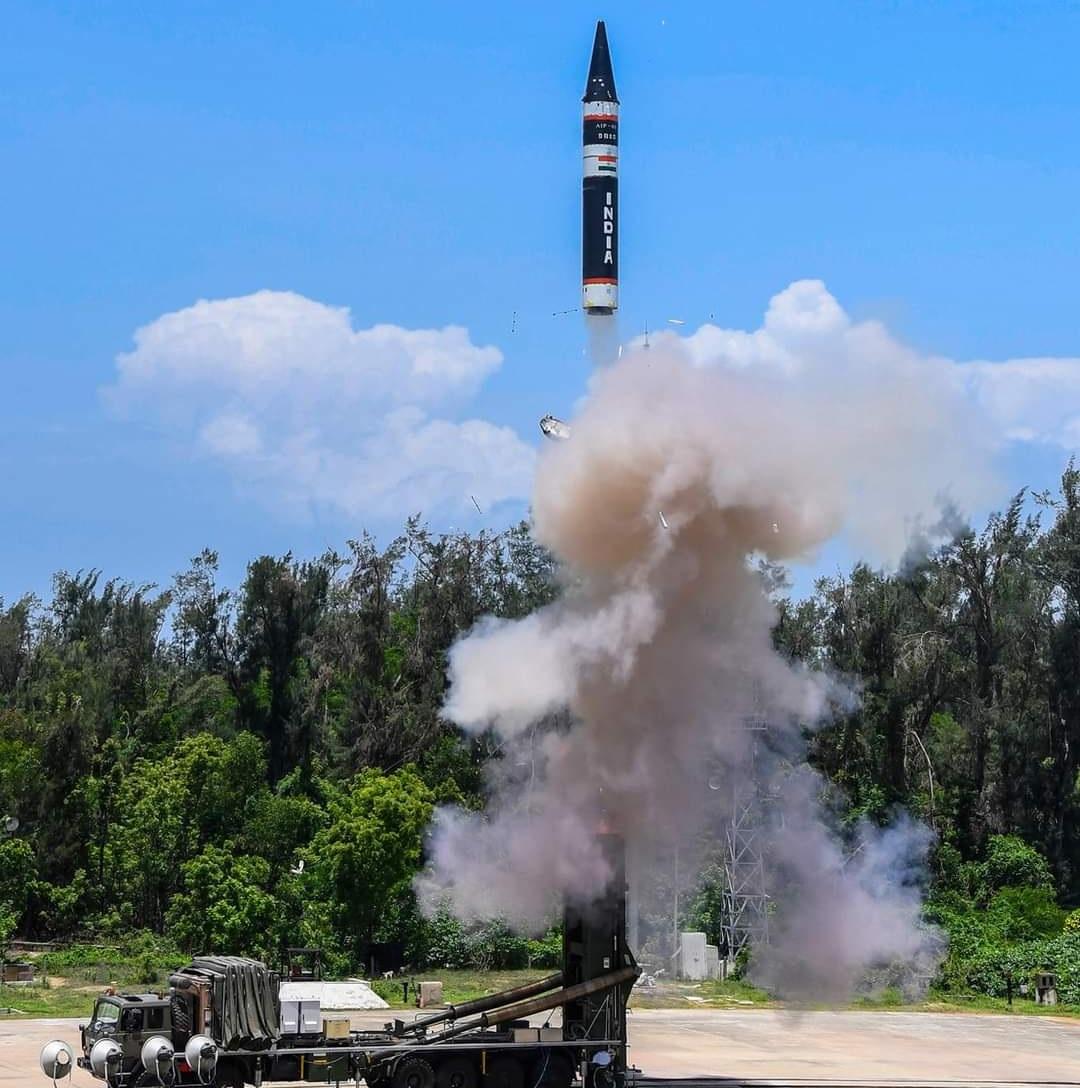On 21 October 2022, Agni-P (Agni-Prime) new generation ballistic missile was successfully test fired off the coast of Odisha for the third time to achieve maximum range. During the test flight, the missile travelled the maximum range and all test objectives were successfully met. With this third consecutive successful flight test of the Agni Prime missile, the accuracy and reliability of the system has been established. The performance of the system has been validated using the data obtained by a number of range instrumentation like radar, telemetry and electro optical tracking systems deployed at different locations including two down range ships at terminal point to cover the entire trajectory.
Agni-P or Agni-Prime (Agn? Fire”) is a medium-range ballistic missile being developed by Defence Research and Development Organisation (DRDO) as a successor for Agni-I and Agni-II missiles in the operational service of Strategic Forces Command with significant upgrades in the form of composite motor casing, maneuverable reentry vehicle (MaRV) along with improved propellants, navigation and guidance systems. Agni-P is a two-stage, road mobile and solid-fueled MRBM which is transported by a truck and launched via a canister.It is a ballistic missile with dual redundant navigation and guidance system. The Agni missile (????? IAST: Agni “Fire”) is a family of medium to intercontinental range ballistic missiles developed by India, named after one of the five elements of nature.
The Agni-P missile with maneuverable reentry vehicle (MaRV) capability that delivered the warheads into two separate locations. The missile is stored in a hermetically sealed tandem twin canister launcher and transported through road and rail. It uses cold launch mechanism and can be fired in salvo mode. As per V. K. Saraswat, MIRV and MaRV technology were already on advance stages of development for Agni-VI in 2013. The MaRV carries four delta fins for the terminal phase of the flight to avoid missile defense system. It is a new class of missile in Agni Series which is half the weight of Agni-III. Both first and second stage of Agni-P are made up of composite material for the purpose of weight reduction, which was mastered during Agni-V project.
The missile carries an improved guidance package and propulsion system covering maximum distance of 2000 km with 1.5 ton payload. Agni-P is primarily aimed at countering Pakistan’s forces owing to the fact that its range is insufficient to reach all parts of mainland China. Although there were many speculations that Agni-P will replace Prithvi-I, Agni-I and Agni-II after induction, government sources denied any such theory. It is expected that DRDO might develop a “carrier killer” based on this missile. As a counterbalance, the progress of Agni-P became crucial part of India’s Indo-Pacific strategy to tackle China’s plan of having five or six aircraft carrier battle groups by 2035 to cover both Pacific Ocean and Indian Ocean.















